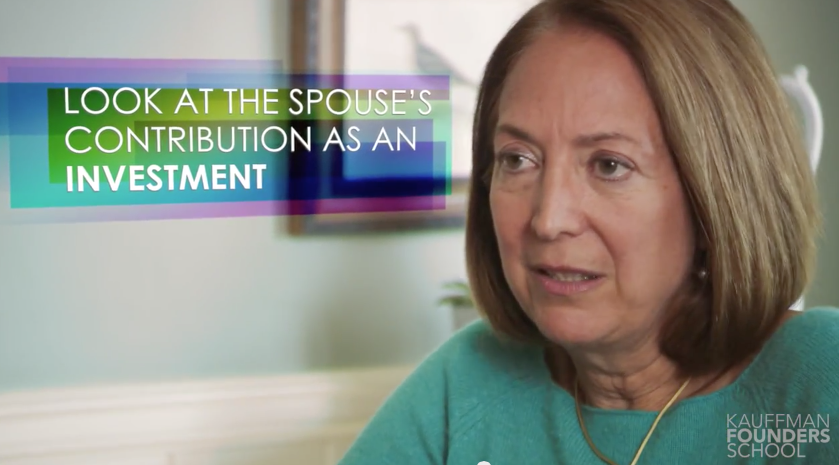When a startup first begins, cash flow is non-existent. And it can often fall on the entrepreneur’s spouse to help provide for the family while the startup gets on its feet. This can cause a number of challenges, as you can imagine. Recently, I revisited Meg Cadoux Hirshberg’s Founders School series, looking to the module “When the Breadwinner Gets Crusty“. Meg is an author featured regularly on Inc.com, whose writing focuses on the trials and tribulations a family encounters when one of the members jumps into founding a business.
Meg’s interview outlines how the hurdles this situation creates go well beyond the fears and frustrations of living on a tight budget. Based on her numerous interviews with couples in the midst of this quandary, Meg outlines the distinct challenges created for those who find themselves in this scenario.
First, such couples experience all of the stresses of two-income families, but the benefit of the income of only one spouse.
Second, in many one-income homes, the stay-at-home spouse is often able to focus his or her attentions on managing the household: running errands, paying bills, and doing chores. In homes where both spouses work but only one earns, the spouse bringing in the income doesn’t often experience any of these “stay-at-home spouse” benefits.
Third, working spouses who shoulder the financial responsibilities of the household can often feel trapped professionally. They may even feel jealously toward their entrepreneurial spouse who is fulfilling her or her dream while they carry the financial load.

Not surprising, Meg explains how these challenges can be exacerbated when the earning spouse must also shoulder the financial needs of the startup. While many couples do their best to keep family finances and business expenses separate, it is not always easy to do. Startups often require multiple cash infusions from the family coffers.
Meg shares an example of an attorney named Andrea, whose job not only supported her family, but also financed her husband’s construction business. Andrea shares that for many years she felt like the “B of A”—the Bank of Andrea—as she worked overtime to bankroll her spouse’s startup. One can imagine how Andrea’s resentment grew when her husband made a comment about how lucky he was to have his freedom, and not have to be out there “working for the man.”
Indeed, homes where two work, but only one earns can weigh heavily upon a couple’s relationship. One woman Meg interviewed said she continually made compromises with her startup business by traveling less and being more accommodating to her spouse. She was afraid that if she didn’t do those things, her spouse would stop supporting her business.
Drawing from her own experiences, Meg offers potential solutions for couples who find themselves in situations like these:
- Reframe the conversation: Spouses who bring in the income and help carry a partner’s business need to think of themselves as investors rather than just bankrollers. Adopting the view that that “we’re in this together” can help couples reach their common goal: making the business a success.
- Invest back into the family. Whenever it’s possible, putting some of business’s profits back into family rather than always back into business can help end the thinking that one spouse “works” while the entrepreneur only “takes.”
While it was difficult for her family in the early years of their startup, Meg confesses that she and her spouse eventually found owning a business to be a great adventure. The benefits can be difficult to see in the early years, when couples face debts, fears and anxieties. Looking at things in the long term instead always in the short term can be very helpful.
Meg reminds that if couples believe in what they are doing and can hang in there and bring the dream of owning a successful business to fruition, they can derive immense satisfaction from the journey and enjoy the sense of achievement knowing that they both contributed to the startup’s success.